When learning a new, unique language or creating content for a diverse audience, the text-to-speech utility has simplified the task. Many resources are available that allow you to transform written text into spoken words using AI. This article explores the most efficient Cantonese text-to-speech converters, which are excellent in terms of features and usability.
Part 1. Best Way to Convert Cantonese Text to Speech Online For AI Voiceover
An innovative solution that stands out as one of the best TTS converters is BlipCut AI Video Translator . This extensive platform offers seamless integration of advanced artificial intelligence to provide voiceover utility. This allows users to generate professional-grade text-to-speech conversions in Cantonese and 95 other languages.
Moreover, this online tool allows users to personalize the process by offering over 1300 realistic voices. Users can choose the tone and accent according to their preferences to make their content stand out.
If you want to learn how Cantonese TTS conversion works in BlipCut AI Video Translator, read the steps below:
-
Step 1. Create Voiceover After Accessing The Webpage
To begin your TTS journey, visit the official website of BlipCut AI Video Translator and access the AI Voiceover feature. Once the web page appears, select the Create Voiceover tab to initiate the process.

-
Step 2. Select Language and Type In Your Text
In the tool's main interface, locate the Language drop-down menu on the left side and select Chinese Cantonese. Moving forward, input your text in the text field offered by the tool and press the Add Pauses button to add occasional pauses in the generated speech. Head to the left side of the window and select a voice from the options provided.
For multiple texts, click the Add Block option to add another text field. Furthermore, adjust the speed according to your preferences to give your result a realistic feel. Finally, head to the bottom of the interface and press Voiceover to execute the TTS conversion.

-
Step 3. Review and Save the Converted Speech
Once the speech is generated, listen to it by pressing the Play button at the bottom. If you are satisfied with the voiceover, head to the top-right corner of the interface and select Download to expand the list. From here, select your desired option, such as Audio , to successfully save the voiceover as an audio file to your device.

Part 2. 6 Tools To Convert Cantonese Text to Speech
Above, we discussed the top picks for Cantonese text-to-speech online conversion; in this section, let us explore other options that offer TTS conversions:
1. Voiser
Using cutting-edge text-to-speech technology, Voiser turns your text into human-like speech in seconds. With an extensive language library and customizable voice settings, it’s perfect for creating compelling narratives, ads, and explainer videos.
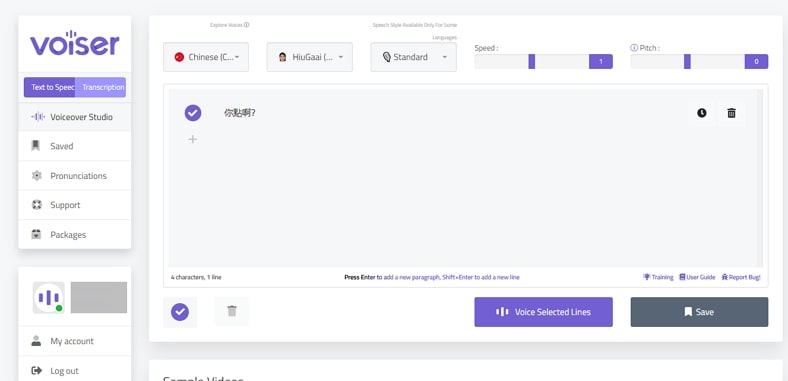
Key Features
-
It offers multilingual support in over 75 languages, including regional accents.
-
The platform provides a variety of voices to match your project's needs.
-
With its AI voice cloning, you can create personalized voices for unique branding.
Pros
![]()
-
Adjust pitch and speed effortlessly to create voiceovers that perfectly match your project’s purpose.
-
It lets you add pauses between the speech to enhance the natural flow.
Con
![]()
-
Some of the regional accents in this Cantonese text-to-voice converter lack the natural touch and fluency.
2. VEED
A versatile platform that integrates text-to-speech directly into its video editing suite is VEED. Whether you are crafting marketing clips or educational videos, VEED allows you to create polished, natural-sounding voiceovers with only a few clicks.

Key Features
-
Users can perform the text-to-speech transformation directly to the video content while staying in the editing interface.
-
Customize your voice with various emotions and tone options offered by this platform.
-
It allows you to generate subtitles across the speech in different languages.
Pros
![]()
-
For multiple audio clips, split the voiceover into various segments with VEED.
-
It lets you adjust the volume and add fades in and out to the generated audio.
Con
![]()
-
Its voice varieties are limited compared to those of other competitors.
3. Speechactors
Speechactors offers an advanced platform for generating human-like voiceovers with precision and speed. This text-to-voice Cantonese ensures a seamless experience for producing expressive and natural audio content for professionals and casual users alike.
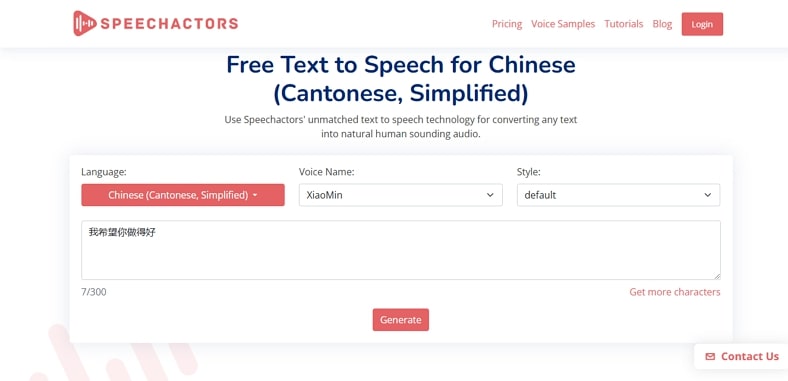
Key Features
-
It offers smooth conversion of text into spoken words in up to 140 languages.
-
Adds background music to your generated voiceovers for a more immersive experience.
-
Offers a voice library with more than 300 reality-based voices.
Pros
![]()
-
You can alter the playback speed according to your requirements.
-
Besides typing the text, users can import an already existing file for TTS conversion.
Con
![]()
-
A paid subscription is required to access all the features of this online tool.
4. Listnr AI
Offering over 142 languages and dynamic voice options, Listnr AI ensures your message reaches a global audience. It lets you effortlessly convert text into engaging, personalized audio content, which is perfect for podcasters and interviewers.
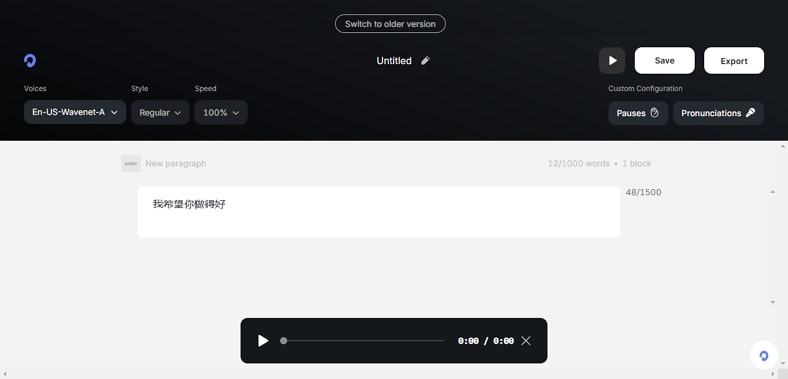
Key Features
-
The platform offers over 100 AI-generated voices that sound natural.
-
With the emotion fine-tuning feature, add depth and realism to the generated voices.
-
This Cantonese text-to-audio converter provides an analytic dashboard to track voiceover performance.
Pros
![]()
-
With punctuation and pause customization, get precise control over the emphasis of speech.
-
It allows users to convert their written text into creative videos using AI.
Con
![]()
-
The prices to access this tool are high, making it an expensive option for users.
5. TTSMaker
This browser-based tool converts text into clear, natural-sounding speech in moments. Whether you are experimenting with voiceovers or handling larger projects, TTSMaker generates real-time speech to save you time.
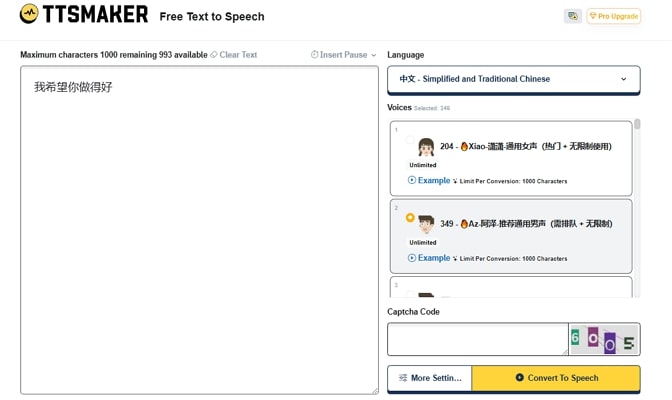
Key Features
-
Save your audio files in multiple formats, including MP3, ACC, and OGG.
-
Users can select from different quality options to ensure the output meets their needs.
-
This Cantonese text-to-speech tool lets you add background music to the speech.
Pros
![]()
-
Enjoy total customization with speed, volume, and pitch adjustment.
-
You can add pause time separately for each paragraph according to the requirement.
Con
![]()
-
It does not let you upload an already existing text file for TTS transformation.
6. Luvvoice
Designed for storytellers, marketers, and creative professionals, Luvvoice offers a wide array of realistic voices that add depth and personality to any script. Whether it's for commercials, animations, or personal content, Luvvoice helps transform your ideas into audio masterpieces with a unique, lifelike quality.

Key Features
-
Offers over 200 realistic and natural-sounding voices to be added as voiceovers.
-
You can upload a text file and type text for TTS transformation.
-
It lets you select from male, female, and child voices to customize the voice to the fullest.
Pros
![]()
-
The language support offered by this text-to-speech in Cantonese converter is more than 70.
-
Create unique voices in seconds with AI voice cloning offered by Luvvoice.
Con
![]()
-
The advanced features are locked behind the premium subscription.
Part 3. Comparing Top 7 Cantonese Text-to-Speech Online Tools
After discussing each tool in detail, the following section will show you the comparison between them in the form of a table:
| Programs | Accuracy Level | Video Integration | AI Voices | Customization |
|---|---|---|---|---|
| BlipCut AI Video Translator | High | 1300+ | High | |
| Voiser | Average | 100+ | Moderate | |
| VEED | Low | 200+ | Moderate | |
| Speechactors | Average | 100+ | Low | |
| Listnr AI | Average | 1000+ | Low | |
| TTSMaker | Low | 500+ | Low | |
| Luvvoice | Average | 200+ | Moderate |
Part 4. FAQs on Cantonese Text-to-Speech
-
Q1. What is the best Cantonese text-to-speech app?
A1: Many smartphone applications offer precise Cantonese text-to-speech conversion with various customization options. However, one of the most reliable applications is Text To Speech (TTS), which efficiently transforms text into spoken words.
-
Q2. What is the best text-to-speech for Cantonese?
A2: Undoubtedly, BlipCut AI Video Translator is one of the best online tools that offer text-to-speech conversion in more than 140 languages with 1300+ voices.
-
Q3. What is the best translator for Cantonese to English?
A3: Besides being the most efficient TTS converter, BlipCut AI Video Translator is also an expert in generating translation for your audio, video, and text content in more than 140 languages.
Conclusion
To conclude, this article discussed the top-most reliable Cantonese speech-to-text generators that users can utilize for effortless conversions. However, the tool that tops the list is BlipCut AI Video Translator, as it allows users to generate audio and visual content with full customization and accuracy.
Leave a Comment
Create your review for BlipCut articles





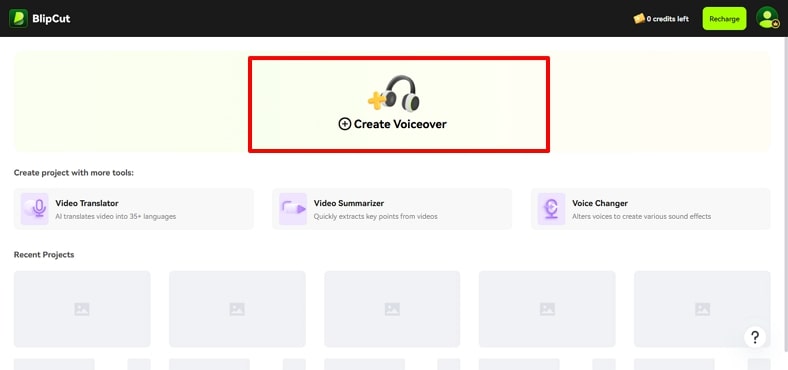
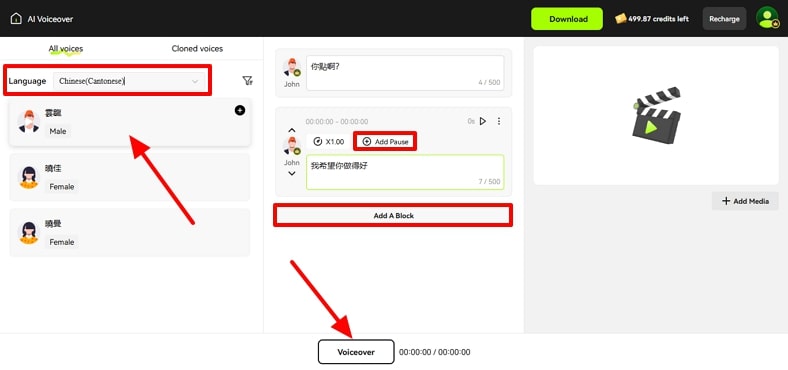
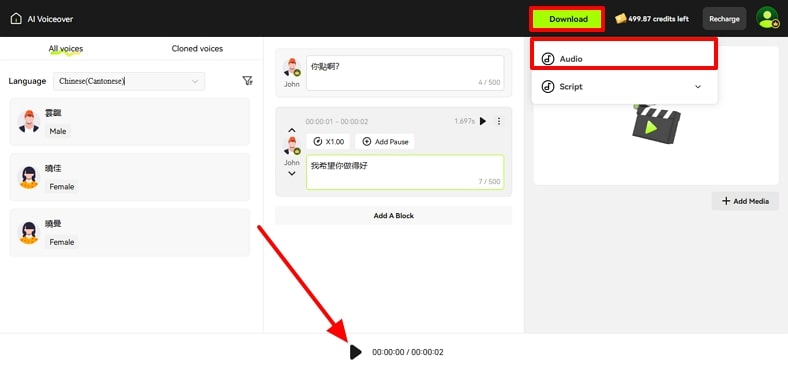

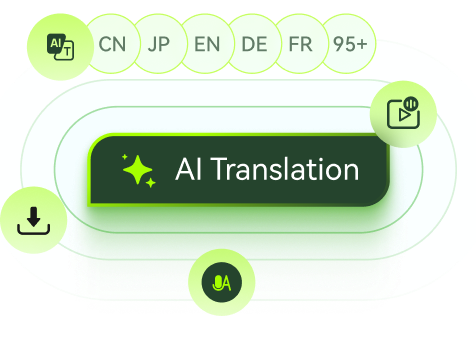



Blake Keeley
Editor-in-Chief at BlipCut with over three years of experience, focused on new trends and AI features to keep content fresh and engaging.
(Click to rate this post)